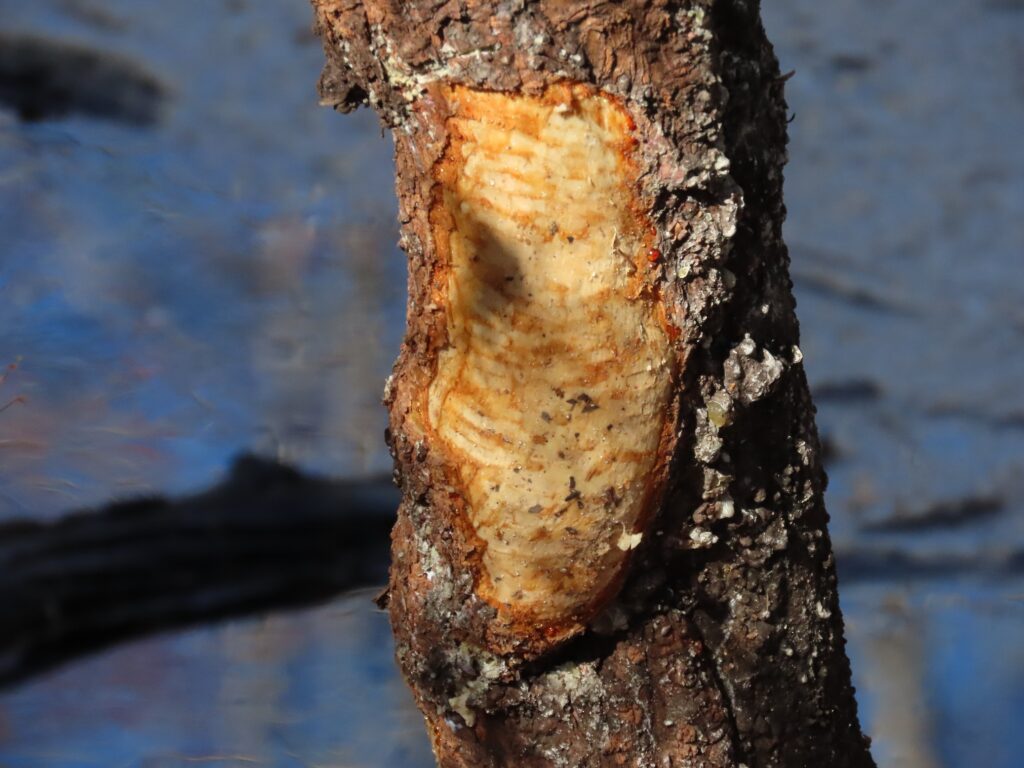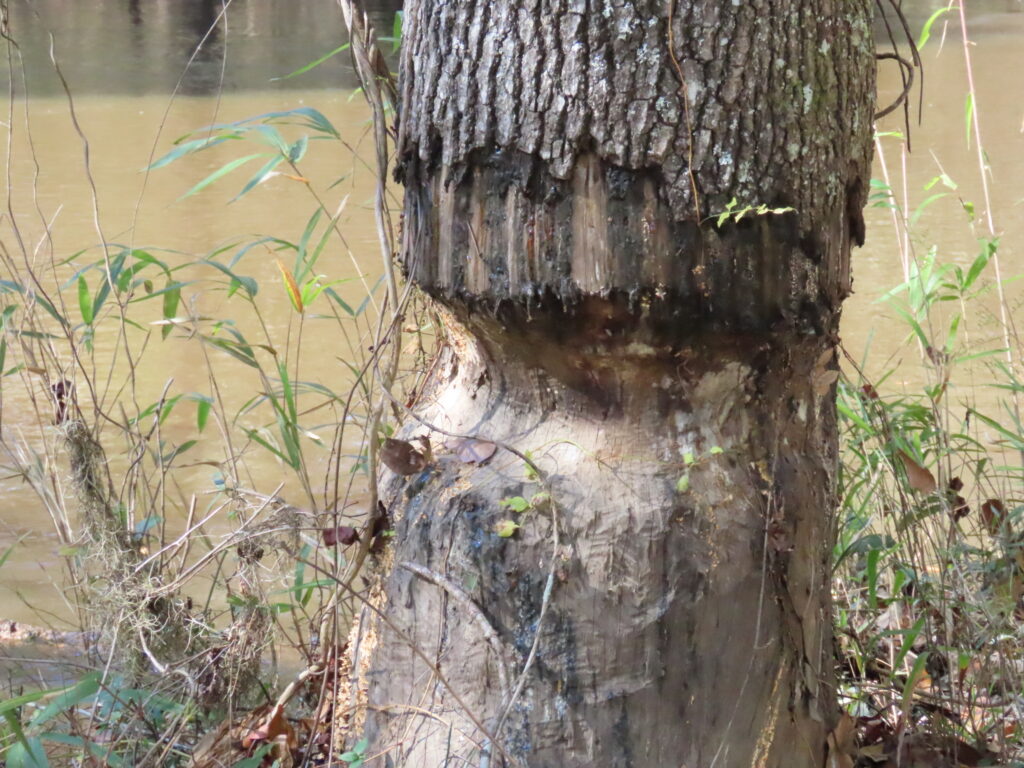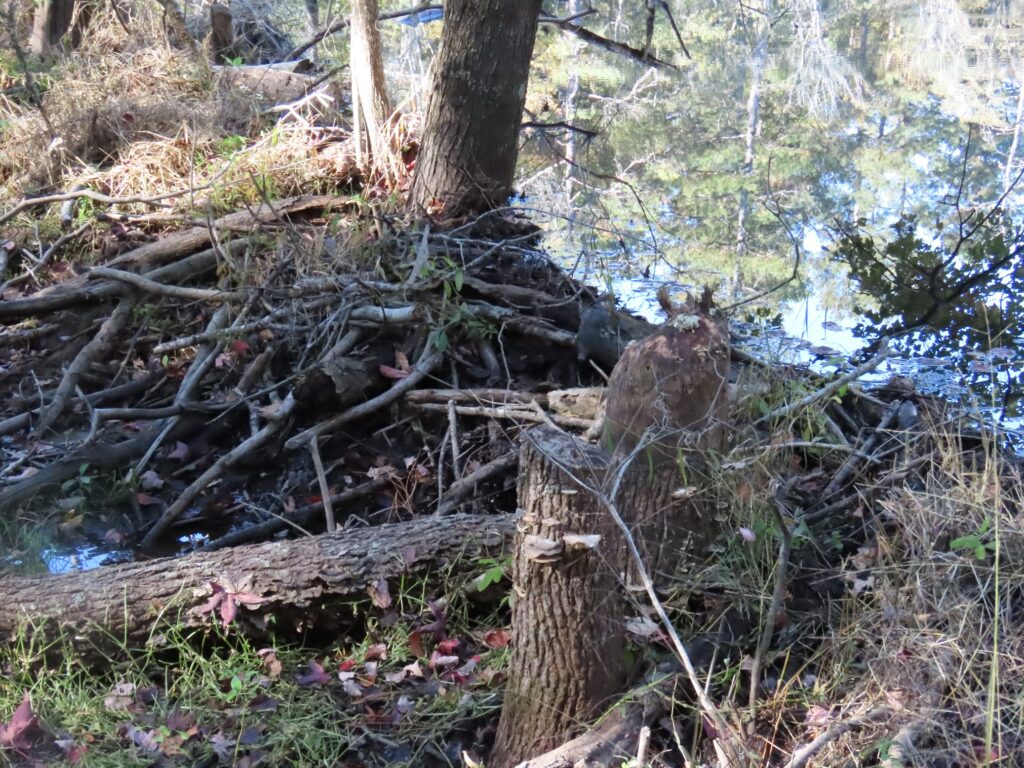



This week for Flora and Fauna Friday we welcome the turbulent return of our wetland building rodent, the North American Beaver (Castor canadensis).
Beavers can be found in freshwater rivers, creeks, marshes, and ponds across all of temperate North America. Beavers are fascinating mammals with a whole host of unique traits. To start, they’re a nocturnal, aquatic mammal. As an aquatic mammal, they of course have webbed feet for speeding up swimming. They also possess a flat, leathery tail that, like the bottom of a Jon Boat, keeps them level and stable as they putter across the shallow waters of their pond. Also, just like a Jon Boat planing into the surf, that flat tail can deliver a bone rattling slap to shake awake the unaware. Beavers mainly slap their tails to signal danger for their family, before retreating to the safety of underwater submerged tunnels. Beavers are North America’s largest rodent and they share their trademark oversized, ever-growing incisors, taken to the extreme. The front teeth of Beavers, and many other rodents, are a rusty orange in color. This color comes from iron rich compounds in their enamel, which greatly enhances its durability. Their teeth continuously grow and wear down throughout a Beaver’s life, self-sharpening against each other. Beavers need these bolstered buck-teeth to feed and house themselves. Their diet consists of tough vegetation, including cattail and water-lily roots and, as what they’re most well-known for, wood! However, Beavers don’t eat just any old wood. They eat the living wood of trees and shrubs; snacking on tree leaves, twigs, and small branches whole or peeling tree trunks like corn on the cob, their teeth chopping it up like a wood chipper. But, unlike every other animal, rather than climbing to the treetop to find a meal, they prefer to bring the treetops down to them. Beavers will gnaw on pondside trees to feed on their inner bark. If they decide they want seconds, they girdle the tree as they waddle and whittle their way around the trunk, chiseling out chunks like they’re sharpening the world’s largest pencil until, with a cacophonous crash and splash, they’ve felled the entire tree precisely into their pond. From the safety of the water, they’ll stock their underwater larders as they work through their windfall of leftovers.
A Beaver’s relationship with wood and wetlands doesn’t end there. Beavers are the textbook example of an ecosystem engineer, a species whose day-to-day life and specialized behaviors change the world around them to usher in environmental changes that create a novel new habitat, which other species then rely upon. Like the sight of a shaggy suburban lawn does to some folks, the sound of running water incenses and overwhelms a Beaver with the maddening urge to cut vegetation. At the whisper of a trickle Beavers fell trees, clip limbs, haul logs, dig holes, waddle and daub. The course of a river be dammed, come Hell or high water. Beavers build dams and those dams staunch the flow of water to create Beaver ponds. Beaver ponds grow marshes, willows, gums, and alders as they expand their banks into the surrounding floodplains, all food for the Beavers. These ponds create a uniquely stable but complex wetland ecosystem that supports hundreds of other species, whether they have fins, fur, feathers, or flowers. Within the pond, Beavers will build their lodge, a cozy hollow hovel made of mounded mud and sticks, with underwater entrances, where they can rest and raise their young. Beavers live in family colonies of about a half-dozen, comprised of the parents and both this year’s and last year’s offspring.
The Beaver once ranged across almost the entire continental United States, bounded by the scorching sand of the Mexican desert to the south and the frozen permafrost of the of the Canadian tundra to the north. From the earliest days of the Colonial Era, Beavers were fiercely hunted and trapped for their valuable fur and musk glands, used in men’s clothing and women’s perfumes respectively. Their populations saw dramatic declines from unchecked and exploitative hunting pressure, extirpating them from many river systems entirely. However, hunting regulations and a change in hunter and trapper ethics, brought on by the conservation movement of the early 1900s, allowed the Beaver to rebound decisively. Now, in the early 2000s, they’ve begun to return to even Edisto Island, likely one of the first places in North America to have eradicated the Beaver from its bounds, some 300 years ago. In the modern world, Beavers have returned home, restoring stability and biodiversity to natural wetland ecosystems across the nation. However, these ecosystem engineers have found themselves at odds with human engineers. To a Beaver, a culvert or trunk is not a perfectly calibrated piece of hydrological infrastructure. It’s a dam hole. Nothing that cramming a truckload of logs and a few yards of mud into can’t fix. This leads to sudden flooding, as intended by the Beavers but not the civil engineers. Beavers also dig underwater tunnels into the banks of berms and dikes, which weaken them out of sight and risk a sudden breach if overlooked. Their lignivorous, wood-eating ways also don’t curry them any favor with foresters, orchard owners, and landscapers, as they can girdle a plot of prized, decades old trees in a mere night. Here on the Sea Islands, where freshwater is as scarce as elevation, Beavers are more of an annoyance than an imminent threat undermining our infrastructure. In the Lowcountry, they’re kept in check by Alligators for the most part but have nonetheless taken a shine to our swamps, rice fields, and farm ponds where, on occasion, they’ll plug a pipe or cork a culvert if they hear that siren’s song ringing of running water.